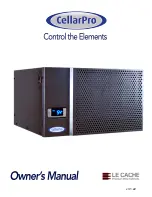
Preparing the appliance for use
Clean the appliance as described in the chapter —> Cleaning and maintenance.
Insert the power plug into a power socket.
Fill the appliance with ca. 5 liters of water and bring it to the boil (—> Switching the appliance on
and off).
Attention:
When it is hot, take hold of the appliance ONLY by means of the heat insulated
handles (2).
Risk of burns!
Note:
On the first use the generation of a slight smell can occur, due to residues from the
production. It is completely harmless and disperses after a short time. Provide for sufficient
ventilation, for example, open a window.
OPERATION
Switching the appliance on and off
Adjust the temperature regulator (6) to the desired heating level.
The indicator light (7) glows. When the set temperature has been reached, the temperature
indicator light (7) goes ou.t. The indicator light (7) glows during operation when the temperature
falls below the set level and the fruit preserver needs to heat itself back up.
When you wish to switch the appliance off, turn the temperature controller (6) to the position OFF.
When the appliance is not in use, always remove the plug from the wall power socket
Preserving
To be understood under the term preserving is the conservation of foodstuffs by, amongst
others, the effects of heat. Dependent upon the type and mass of the items to be preserved, a
differentiation is made between the processes of sterilization and pasteurisation.
In sterilization, the items to be preserved are heated to a temperature of at least 100°C. With
pasteurisation the heating temperature lies by 80°C. For domestic use pasteurisation is s ufficient.
To achieve this, you need appropriate preserving jars, with screw-tops or lids with rubber rings,
and a fruit preserver.
1.
Place the preserving grill (8) in the fruit preserver.
2.
Stand the well sealed preserving jars on the preserving grill (8).
3.
Fill the fruit preserver with sufficent water to ensure that the upper jars are submersed in
water to at least 3/4 of their height. Ensure that the preserving jars in the lower layer are
firmly sealed, so that water cannot infiltrate them.
4.
Close the fruit preserver with the lid (1).
Attention:
When it is hot, take hold of the appliance ONLY by means of the heat insulated
handles (2).
Risk of burns!
Summary of Contents for 10006481
Page 1: ...Einkochautomat 10006481...


































